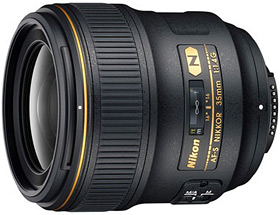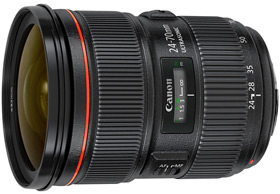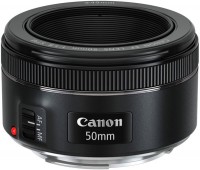What to look for when buying a lens
 |
Do you want "elka"?
The Canon L-series of objects is simply a symbol of a top-class professional object. These are dust- and moisture-proof objects with a durable body and high-quality lenses, as well as high luminous intensity. "Canon elki" can be recognized by the red stripe around the object. Nikon and other companies certainly have analogues in quality. The higher the object class, the higher its price, so immediately decide how much you are willing to spend, study objects in a suitable price range. It's quite normal to want "elka", but you should always remember about the level of your income and that a person creates a brilliant photo, and technology is only a good assistant.
Should I take a "staff member"?
We will immediately give you a tip: in a fit of emotion or a fit of economy, do not rush to buy a "whale" object complete with a camera. He, of course, seduces with his price, but not in all models pleases with quality. The top series of cameras are equipped with excellent objects, but the low-cost ones are medium–sized, with low aperture and not always good lenses. Therefore, sometimes it is worth paying a little more and buying the object separately. For example, if you buy a low-cost Nikon D3100 18-55VR Kit camera, then it comes with the Nikkor DX 18-55mm f/3.5-5.6G VR AF-S object, and after paying a little extra, you can purchase the Nikkor DX 18-105mm f/3.5-5.6G ED VR AF-S object. It is better in many characteristics, for example, the focal length range is twice as large, groups of lenses made of ED-glass, which provide better image quality.
Manufacturing companies
Canon and Nikon are deservedly considered leaders in the market of SLR cameras. The quality of their equipment has really been tested by time and millions of users, but when buying objects, you also have to pay for the name. Therefore, many photographers acquire equipment from analogue companies: Sigma, Tokina, Tamron and others. Moreover, they are often satisfied with the combination of price and quality. It is difficult to advise one firm, it is always worth comparing specific models of objects in all parameters. And also read reviews from other users, study reviews and conduct independent tests.
Focal length
One of the main parameters of the object is the covered range of focal lengths (how much it brings objects closer or vice versa shows the space at a wide viewing angle).
There are three types of focal length objects:
 |
- Conventional – with a viewing angle of 50 degrees and a focal length of 50 mm (for a full-format matrix). They create images that are familiar to the perception of the world by the human eye. By and large, you can photograph quite a lot of subjects exclusively with the help of such objects (for example, Canon EF 50mm f/1.4 USM, Nikkor 50mm f/1.8D AF, Sigma 50 mm f1.4 EX DG HSM).
- Long–focus - with a viewing angle of less than 30 degrees and a focal length of 85 mm to 500 mm (approximately). Objects with a focal length of more than 500 mm are almost telescopes. But the hardworking Chinese even produce 1300 mm "glasses"! (Samyang 650-1300/8-16 (T-mount), although the recognized leader of the Canon photo industry is limited to a distance of 400 mm. They bring objects with different levels of multiplicity closer. They are absolutely necessary for reportage filming and photographing sports events, but they will also be useful in travel photography and other types of filming.
- Wide–angle - with a viewing angle of more than 50 degrees and a focal length of 12-35 mm. They capture large volumes of space, are needed for shooting landscapes and interiors, as well as implementing various creative solutions in any genre (for example, Tokina AT-X 124 PRO DX II 12-24 mm f/4, Samyang 24mm f/1.4, Nikkor 14-24 mm f/2.8G ED AF-S).
-
It is also important to remember that there are fixes (objects with a constant focal length) and zooms (objects with a variable distance). Due to the built-in motors and more lenses, zooms are more expensive than fixes, so sometimes you can buy one main object zoom and additional fixes. Then you will cover most of the required focal lengths and save.
Specialized objects
Separately, we can distinguish types of objects designed to solve specific tasks: Portrait – with a focal length of 50-85 mm and specially selected groups of lenses that provide a smooth transition between sharp and unsharp details of the image. Macro – for shooting small objects at a minimum distance. If the minimum focus distance in a normal object is about 30 cm, then in a macro object it is less than 10 cm. For macro photos, it is not necessary to buy a separate object, you can do with macro rings that will change the focus distance. Fish-eye is an ultra–wide-angle object. Gives a characteristic picture in the shape of a circle.
"What is the power, brother?" – "In the luminosity"!
An important parameter of an object is its luminosity, that is, how much it weakens the incoming light flow. The more expensive and better the lenses, the less they are an obstacle to the passage of light. This characteristic depends on the lens material, on the antireflection coatings, and on the formation of lens groups. The more light the object lets in, the better, it will make it much easier for you to shoot in dark rooms, at concerts, at dusk. If you plan to photograph mostly sun-drenched beaches, then the question of light intensity may not bother you.
Stabilization
Another parameter that allows you to take good photos in low light is optical image stabilization. Unlike the stabilizer with a matrix shift, which is located in the camera, the optical stabilizer is located in the object itself. In Canon objects, this parameter is marked with the abbreviation IS, in Nikon - VR, and in Sigma - OS.
Bayonet
Do not forget to pay attention to the bayonet attachment system of the object to the camera. They come in different types, depending on whether the matrix is cropped or full-format. Often, objects designed with the crop factor in mind cannot be used on full-format cameras. And when buying objects from analogue companies, you need to pay attention to which company's camera the object was created for (for example, Sigma produces similar models of objects with bayonets designed for Canon or Nikon cameras).
Self-testing
Trust manufacturer reviews and comments on forums, but check. There are several simple tests that allow you to determine the level of sharpness of the object and the uniformity of its distribution, front and back focus (front-focus, back-focus), the level of chromatic aberrations.
Namely: to check the sharpness zone, take a photo of a specially printed sheet of paper with divisions or a regular ruler located perpendicular to the front lens. Focus on the marked division, and then on the computer monitor (not on the camera screen!) check whether the area of sharpness is really where you were aiming; to check the uniform distribution of sharpness and the absence of distortion in the frame, take a picture of a sheet of paper with a similar pattern or an ordinary newspaper. It should be clearly opposite the camera, parallel to the front lens. Pay attention to whether there are any distortions, whether sharpness disappears at the edges of the frame; chromatic aberrations (artifacts in the form of coloured stripes around objects) are most pronounced in contrast lighting. Take a picture of tree branches against the sky and look at the enlarged photo. If you conduct at least these three simple tests for the objects you like, you will immediately be able to feel the difference between them, and it will be much easier to make a choice.
Articles, reviews, useful tips
All materials















